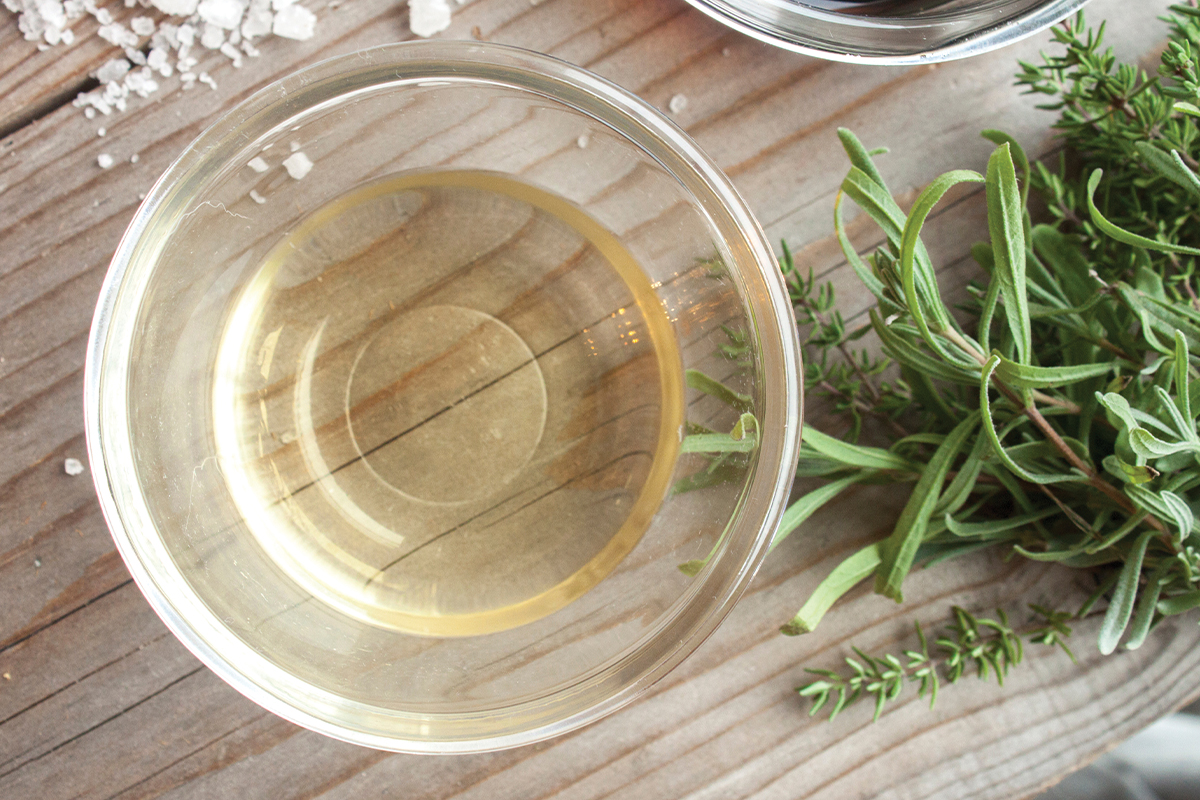Today’s shoppers are buying private brands more often, according to the 2023 Power of Private Brands report from FMI – The Food Industry Association, Arlington, Va. Packaged meat and poultry processors are responding by investing in more of what consumers want in private brands, such as clean labels and premium value. In fact, many retailers prefer the term “own brands,” as it better communicates their commitment to quality and value.
When it comes to processed luncheon-style meats, often viewed as an affordable source of animal protein, private-label processors incorporate food safety ingredients to assist own brands in building trust with shoppers. Own brands prioritizing clean label choose meats that include various plant extracts and vinegar-based ingredients.
Use a footnote
“Consumers’ savviness about ingredients has really changed,” said Sherry Frey, vice president of total wellness, NIQ, Chicago, at The Center for Food Integrity (CFI) Transparency Summit 2023, held in Rosemont, Ill., on Nov. 14-15, 2023.
Mickie French, CFI executive director, added, “[They understand] it’s not realistic to buy a product [free of functional ingredients] and not have to eat it the same day.”
Today’s shoppers understand that ingredients serve a function. Just tell them what it is.
“The path to trust is transparency,” said Steve Markenson, vice president-research and insights at FMI. “This includes explaining the use of certain ingredients.”
Target Corp., Minneapolis, does this on its Good & Gather All Natural Deli Slices. The oven-roasted turkey breast slices, for example, state on front panels: “no nitrates or nitrites added,” with a footnote explaining “except those naturally occurring in celery powder and sea salt.” Both are listed on the ingredient statement, along with vinegar. Front panels also state “no artificial flavors or preservatives,” with the ingredient statement including a footnote following vinegar, celery powder and sea salt that reads “to preserve quality.”
That communicates to savvy shoppers that these ingredients not only keep the food delicious and safe, but it may also assist with reducing food waste, a growing priority for many consumers. Numerous studies show that consumers are actively trying to purchase products formulated to reduce food waste. This includes an evolving acceptance of ingredient technology, e.g., antioxidants, antimicrobials, etc., to assist with this effort. Transparency and communication about the role of an ingredient helps gain consumer trust and acceptance.
“What we know is that value is more important for our guests now than ever before, and that’s why a key part of our strategy is developing a trend-forward and curated assortment of national brands we know our guests love alongside differentiated own brands,” said Erica Thein, vice president of food and beverage, owned brands, Target Corp., when speaking at Groceryshop 2023 in Las Vegas in September.
Merck Animal Health, Rahway, NJ, recently conducted an online survey of 1,009 US adults who had eaten meat, fish, eggs or dairy in the past seven days. Results showed that “transparency is personal,” said Jane Dukes, associate director, marketing communications and stakeholder engagement, at the Transparency Summit. The No. 1 reason for wanting transparency is for food safety, as identified by 66% of respondents.
“Consumers look for transparency on the package (48%) and online on the company website (35%),” Dukes said. “Packaging stickers (35%), too.”
The survey also showed that 84% of consumers are very or somewhat willing to pay a 5% premium for transparency on the label.
That’s where own brands come into play. Unlike generic, private-label or store brands, own brands take into consideration what shoppers want, while also providing value.
“This may be versatile uses, low-stress flavor building or longer shelf life,” said Melanie Bartelme, global food analyst, Mintel. “These attributes can help show consumers that these products are ‘worth’ the cost.”
“[After all] not all processed foods are created equal,” said Kris Sollid, a registered dietitian who is the senior director, nutrition communications, International Food Information Council, Washington, DC. That includes processed luncheon-style meats.
The power of vinegar
Many own brands of luncheon meats — as well as national brands — now include vinegar in the recipe, an ingredient that provides protection against Listeria monocytogenes. This microorganism is omnipresent in the environment and spreads quickly.
Straight vinegar, as well as buffered vinegar ingredients, are recognized for their food safety benefits and appreciated for their all-natural reputation. Consumers know vinegar.
Vinegar is the fate of drinking or grain alcohol exposed to oxygen and acetic acid bacteria, those from the genus acetobacter. These bacteria metabolize alcohol into water and acetic acid, producing the very stable, multi-functional liquid known as vinegar.
Although acetic acid is the primary constituent of vinegar after water, acetic acid is not vinegar. Acetic acid, as well as other food-grade acids, namely lactic acid and propionic acid, are the most common organic acids used to inhibit pathogenic and spoilage microbial growth.
Their mode of action is the same, but their effectiveness varies by the organic acid, specifically the amount of undissociated or non-ionized acid. It is the undissociated acid that penetrates microbial cell walls. Once inside the microorganism, where the pH is near or above neutral, the acid dissociates, lowering the pH.
The pathogens and spoilage microorganisms encountered in the meat and poultry processing and distribution environment are pH-sensitive; thus, this change in pH impairs or stops growth. Further, the anionic parts of the organic acid, which are the negatively charged ions, remaining in the microorganism will accumulate, disrupting metabolic functions. This leads to an increase in osmotic pressure that eventually destroys the microorganism.
Again, consumers know vinegar, making it a logical clean-label ingredient. Vinegar ingredients come in a buffered format as both a liquid and powder. Buffered vinegar does not negatively affect meat quality, water-holding capacity, protein denaturation, color or flavor. The dry version is almost four times as strong as the liquid, which means usage levels are lower with the dry product. Buffered vinegar may be added via a brine, marinade, spice blend or direct application to meat. Ingredient statement declaration is as “vinegar” or “vinegar powder.”
Buffered vinegar systems may contain either sodium or potassium cations. Manufacturers trying to manage sodium content levels will often opt for the potassium version. They are equally effective at inhibiting growth of pathogens and spoilage bacteria; however, depending on application, there’s always that chance the slight bitterness of potassium may be detectable.
 The antioxidant properties of plant extracts in the production of products like lunch meat are preferred by consumers seeking clean-label foods. (Source: ©DPRM - STOCK.ADOBE.COM)
The antioxidant properties of plant extracts in the production of products like lunch meat are preferred by consumers seeking clean-label foods. (Source: ©DPRM - STOCK.ADOBE.COM)The role of plant extracts
Luncheon meats vary in their fat content. Makers of luncheon meats on the higher side need to take steps to control lipid oxidation, a natural process that cannot be prevented, just slowed. Fats degrade when fatty acids react with air, moisture or other compounds and break down into free fatty acids and other unstable compounds. Reactions will cease when an antioxidant enters the scenario. But at this point, any degradation that has occurred is permanent. The fat cannot repair itself.
Traditional synthetic antioxidants are very effective, easy to use and low cost. But being chemically derived, which is obvious by their names — butylated hydroxyanisole (BHA) and butylated hydroxytoluene (BHT) — are undesirable in today’s clean-label environment. In response, meat processors are embracing clean-label antioxidants that can be discreetly added to product formulations. Common options are classified as tocopherols, also known as vitamin E, and high-phenolic plant extracts, such as those sourced from rosemary, green tea and acerola.
Rosemary and green tea extracts are often combined with buffered vinegar for a multi-prong approach to extending shelf life by addressing color retention and food safety with one ingredient. Often times when combined together, the ingredients work synergistically, allowing for a lower usage rate for the same effect.
Both rosemary and green tea extract have phenolic compounds that function as antioxidants, preventing oxidative breakdown of meat pigments by being oxidized themselves. The main difference between the two plant extracts is that green tea extract has a lower negative flavor contribution to the final product. Thus, using a lower level of rosemary extract in combination with green tea extract allows the manufacturer to increase the natural plant extract usage rate, often resulting in an extract blend that works better in the meat product than using rosemary alone.
Acerola cherry extract is also proving to be a highly effective ingredient in meat and poultry. Extracted from the namesake wild plant grown in tropical and subtropical regions, acerola extract contributes the antioxidant vitamin C. The ingredient has been shown to delay both lipid and myoglobin oxidation, thereby delaying the onset of color loss and maintaining the desirable color and quality of meat products. When used in combination with rosemary and green tea extracts, acerola is more effective at delaying early discoloration than either extract alone.
Many luncheon meats rely on curing salts made with synthetic nitrates and nitrites to develop flavor and color. The most common clean-label alternative is celery powder or extract, a natural source of nitrates and nitrites.
Nitrates and nitrites are responsible for adding a zingy, tangy flavor to meat and poultry. They also produce color in some cooked or smoked processed meats. In pork, for example, nitrates and nitrites give ham and turkey a desirable pink color.
Dried plums have also been shown to assist with color in cooked meats. Not only are they a source of antioxidants, they contribute to a desirable red hue. Thus, dried plums can be used to enhance color, often in conjunction with other ingredients.



